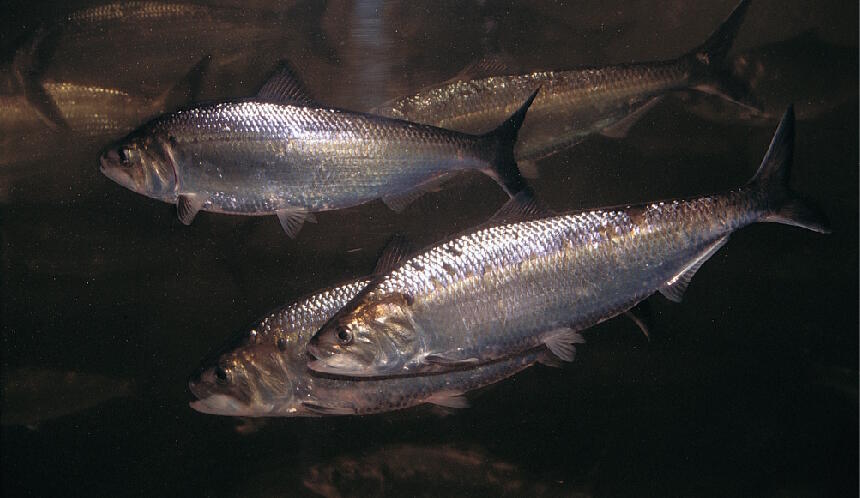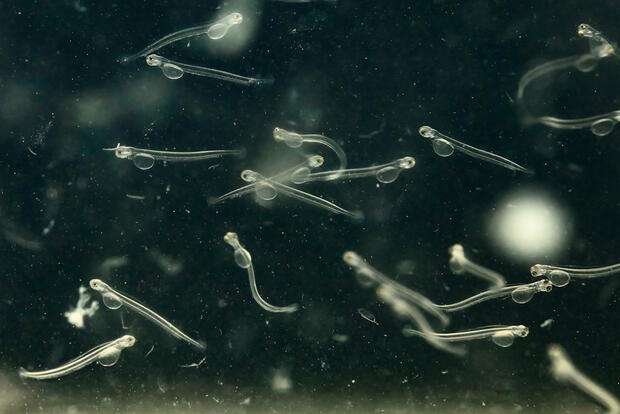- Division of Fisheries and Wildlife
Media Contact
Media Contact, MassWildlife

American shad are fish that migrate from oceans to rivers every spring to spawn. They were once abundant in large Massachusetts rivers like the Taunton, but now only a small portion of their historical population remains. To help increase their numbers, MassWildlife, the Division of Marine Fisheries, and the U.S. Fish and Wildlife Service have begun stocking larval shad.
Fish, like American shad, that spend portions of their lives in both the ocean and freshwater rivers, are known as diadromous fish. Special techniques are needed to restore these migratory fish so that they become connected to a certain freshwater location. Tiny shad, just a few hours old and still attached to their egg sacks, are stocked in the Taunton so that they can “imprint” on the unique characteristics of the river. This will aid in their navigation back to the Taunton when they return as adults after spending 3–5 years in the ocean. Approximately 2 million larval shad will be stocked in the Taunton River each year over the next 5 years.
The Division of Marine Fisheries and MassWildlife began monitoring shad populations in the Taunton using beach seines and electrofishing methods in 2017. The U.S. Fish and Wildlife Service began stocking in 2022. Monitoring will continue over the next several years to document population changes in response to the stocking effort. The goal of this partnership is to restore a strong, self-sustaining shad population, and to open the fishery to recreational harvest in the future.
Taunton River once teemed with river herring, shad, and other diadromous fish. However, during the industrial revolution these populations plummeted due to pollution, overfishing, and the construction of multiple dams that blocked passage of migratory fish. Today, water quality improvements and an increase in habitat quality and quantity through dam removal have allowed for the opportunity to bring back this historically important fishery.
This shad restoration effort is part of a larger conservation story for the Taunton. Recent dam removals on Mill River—a tributary of the Taunton—and water quality improvements have led to a rebound in the number of river herring in that system. The once diminished river herring population, which includes both alewife and blueback herring, is thriving and the Taunton is now home to one of the largest river herring runs in the state. River herring numbers in the Mill River have increased from 1,000 fish in 2013 to over 31,000 fish in 2021.
MassWildlife, the Division of Marine Fisheries, and the U.S. Fish and Wildlife Service will continue this collaborative restoration and monitoring work in the Taunton with the goal of returning the American shad population closer to historical levels. To learn more about the history and current state of migratory fish in Massachusetts, read Migrating Fish, Changing Rivers. This article, written by MassWildlife Fisheries Biologist, Steven Mattocks, was published in Massachusetts Wildlife magazine in 2022.

